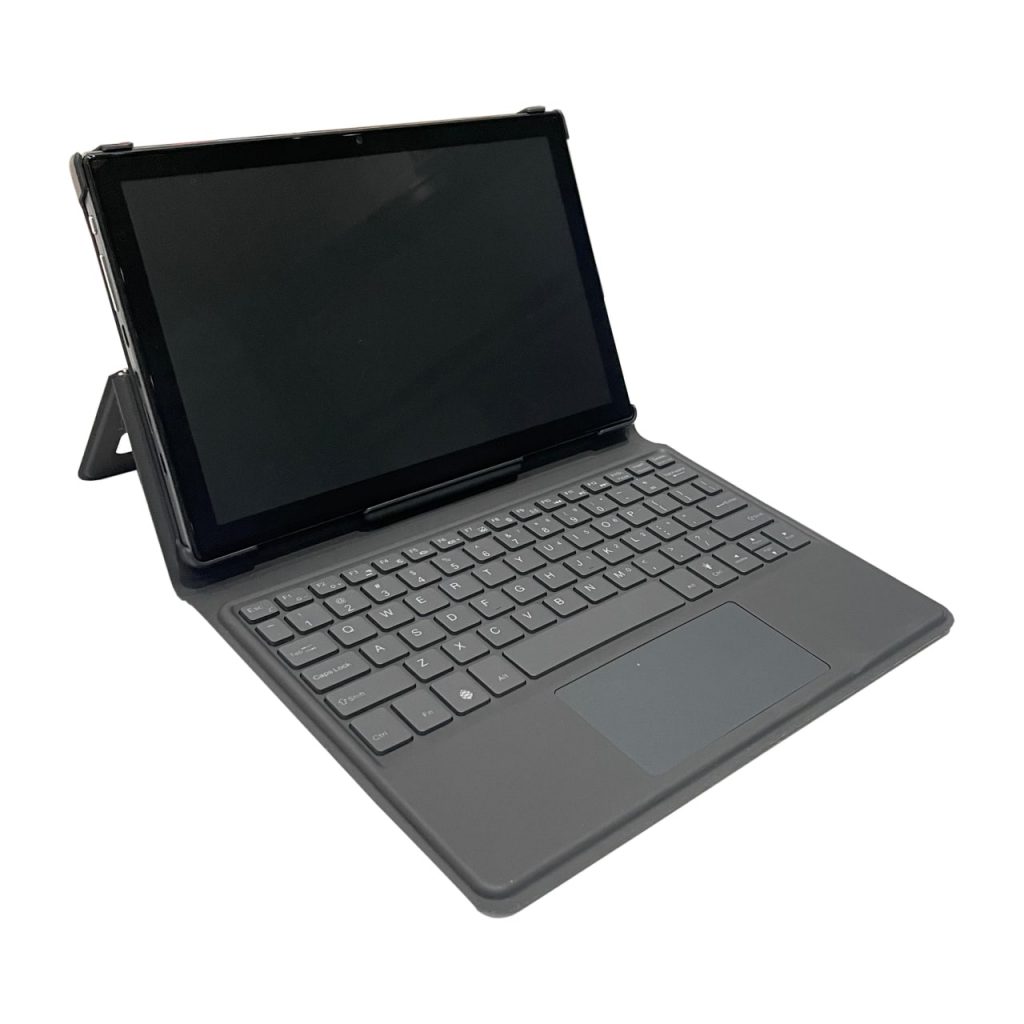Difference between revisions of "PineTab2"
m (Fxc moved page User:Ptman/PineTab2 draft to PineTab2 over redirect: No longer a stub) |
(naming as via blog post) |
||
| Line 1: | Line 1: | ||
[[File:PineTab2 Front.jpg|250px|thumb|right|The | [[File:PineTab2 Front.jpg|250px|thumb|right|The PineTab2 with the detachable keyboard attached]] | ||
The ''' | The '''PineTab2''' is PINE64's successor to the original [[PineTab]] Linux tablet computer, featuring a faster processor and better availability. The tablet is available in two configurations, 4GB of RAM and 64GB of internal storage or 8GB of RAM and 128GB of internal storage. The tablet ships with a detachable keyboard that doubles as a protective cover. | ||
The tablet is designed around the Rockchip RK3566 processor, which features 4 energy-efficient Cortex-A55 64-bit ARM cores and enjoys good mainline Linux support. | The tablet is designed around the Rockchip RK3566 processor, which features 4 energy-efficient Cortex-A55 64-bit ARM cores and enjoys good mainline Linux support. | ||
Revision as of 15:19, 10 March 2023
The PineTab2 is PINE64's successor to the original PineTab Linux tablet computer, featuring a faster processor and better availability. The tablet is available in two configurations, 4GB of RAM and 64GB of internal storage or 8GB of RAM and 128GB of internal storage. The tablet ships with a detachable keyboard that doubles as a protective cover.
The tablet is designed around the Rockchip RK3566 processor, which features 4 energy-efficient Cortex-A55 64-bit ARM cores and enjoys good mainline Linux support.
It is expected to be available in April of 2023, with pricing starting at USD 159 for the 4GB/64GB version and USD 209 for the 8GB/128GB version.
Specifications
- SoC: Rockchip RK3566
- CPU: 4x ARM Cortex-A55 @ 1.8 GHz
- 32KB L1 Instruction Cache and 32KB L1 Data Cache per core
- 512KB unified system L3 cache
- ARMv8 Cryptography Extensions
- GPU: Mali-G52 MP2 @ 800 MHz
- Supported by the open source 'Panfrost' driver in Linux and Mesa, supports OpenGL 3.1 and OpenGL ES 3.1 with many newer extensions
- NPU: 0.8 TOPS Neural Processing Unit
- RAM: 4GB or 8GB LPDDR4
- Storage:
- 64GB or 128GB internal eMMC
- 1x MicroSD slot
- Display: 10.1" IPS LCD Resolution 1280x800
- Cameras: 2Mpx front, 5Mpx rear
- Battery: 6000 mAh (22.2Wh)
- Buttons: Power, volume up, volume down
- Network:
- Wi-Fi
- Bluetooth
- I/O:
- 1x USB-C 3.0
- 1x USB-C 2.0
- 1x MicroHDMI
- 1x 3.5mm audio jack
- 1x 5 pin Pogo connector for keyboard
- (PCIe on PCB as a flat flex ribbon connector, no room for M.2 NVMe drives in case)
- Multimedia:
- rkdjpeg: 1080p120 JPEG decode
- no driver in mainline yet
- hantro: JPEG/VP8/H.264 encode, 1080p MPEG-2/H.263/VP8/H.264 AVC decode
- mainline driver does not yet support all codecs/functions, see Mainline Hardware Decoding and Mainline Hardware Encoding
- rkvdec2: 4K H.264 AVC Main10 L5.1/H.265 HEVC Main10 L5.1/VP9 Profile 0 and 2 L5.1 decode
- no driver in mainline yet
- rkvenc2: 4K H.264 AVC/H.265 HEVC encode
- no driver in mainline yet
- rkdjpeg: 1080p120 JPEG decode
- Build: Metal and Plastic
- Dimensions: 242x161x9mm
- Misc:
- Protective cover with keyboard
Development efforts
Main Article: Quartz64 Development
Linux mainline is already quite far along for the device, as the SoC is the same as is used in the Quartz64 line of devices.
Notable features currently missing are the display panel driver (needs submitting), Wi-Fi driver (needs porting/major cleanup) and camera driver (needs writing).
Datasheets for Components and Peripherals
Rockchip RK3566 SoC information:
